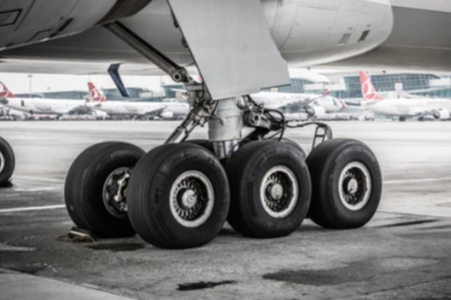What Are the Features of High-Performance Aircraft Tires?

High-performance aviation tires are essential to the safe and effective functioning of the aircraft. These tires are designed to endure extreme pressures, high speeds, and a variety of weather situations that arise during flight. Understanding their features is essential for ensuring optimal performance and safety in aviation.
Materials and Construction
Advanced materials and construction processes are used in the precise crafting of high-performance aircraft tires. Usually, these tires are made of layers of specialty rubber compounds reinforced with nylon or Kevlar synthetic fibers. The structure is built to resist the high loads and pressures that are applied during landing, takeoff, and taxiing. The rubber compounds that are utilized are selected based on their toughness, longevity, and capacity to keep traction on different types of surfaces. This guarantees that the tires’ performance and safety won’t be compromised in the face of high-speed operations’ fast acceleration and deceleration forces.
Patterns and Design of Treads
High-performance aviation tires have specially designed tread that is tuned to improve braking, grip, and traction on both wet and dry terrain. Aircraft tires have special tread patterns that are intended to effectively disperse water and stop hydroplaning on wet runway conditions, in contrast to regular car tires. Tire life is increased by these complex tread patterns, which also help reduce wear and tear. In order to maximize surface contact and preserve stability—both essential for safe operations at high speeds and in a variety of weather conditions—each groove and sipe in the tread pattern is positioned intelligently.
Sturdiness and Perseverance
One characteristic of high-performance airplane tires is their durability. The tires are designed to endure frequent exposure to elevated temperatures produced during landing and takeoff, in addition to the rough friction experienced during ground operations. The utilization of reinforced sidewalls and specialized heat-resistant materials enables them to withstand demanding operational circumstances without sacrificing dependability or safety. This guarantees that every tire will continue to operate at its best for the duration of its operating life, even in the most demanding aviation settings.
Considerations for Weight and Balance
High-performance aircraft tire design and selection heavily rely on weight management and balancing. The lightweight and durable design of these tires reduces the aircraft’s overall weight without sacrificing performance or structural integrity. Achieving the greatest range and payload capacity requires striking a balance between strength and weight reduction in order to provide optimal fuel efficiency and operational flexibility. Innovative materials like lightweight metals and carbon fiber composites are frequently used in tire design to attain the ideal weight-to-strength ratio. This novel method lowers fuel consumption and environmental effects of flight operations while improving aircraft performance.
Ratings for Temperature and Pressure
High-performance airplane tires are designed to operate safely and dependably under a variety of conditions. They are rated for particular temperature and pressure ranges. The operational limits of the tire and its compatibility with various aircraft models and configurations are determined by these essential ratings.
These tires can withstand extreme cold and intense heat while maintaining their structural integrity and performance constancy thanks to their innovative manufacturing processes and temperature-resistant compounds. Because they specify the maximum load capacity and inflation needs required to support the aircraft’s weight during all phases of flight, the pressure ratings are equally significant.
Read more How Do Modular Cooking Stations Simplify Outdoor Entertaining?
Upkeep and Duration of Service
High-performance aviation tires require routine inspections, pressure checks, and tread depth measures. To extend the tire’s service life and prevent premature wear, scheduled maintenance intervals are set based on operational usage, environmental factors, and manufacturer recommendations. Tire rotation and balancing are two proactive maintenance techniques that can increase the operating life of these tires while lowering the possibility of abnormal wear and eventual failures. Additionally, routine inspections make early diagnosis of wear or damage possible, which guarantees continuous aircraft operations and allows for prompt replacement.
Conclusion
High-performance airplane tires are the epitome of engineering brilliance, created to satisfy the demanding requirements of contemporary aviation. These tires are essential to maintaining the effectiveness, dependability, and safety of aviation operations around the globe because of their sophisticated construction, strong materials, unique tread patterns, and careful weight management. Both aviation experts and amateurs must comprehend their features and capabilities since they play a crucial role in aviation safety and performance.





